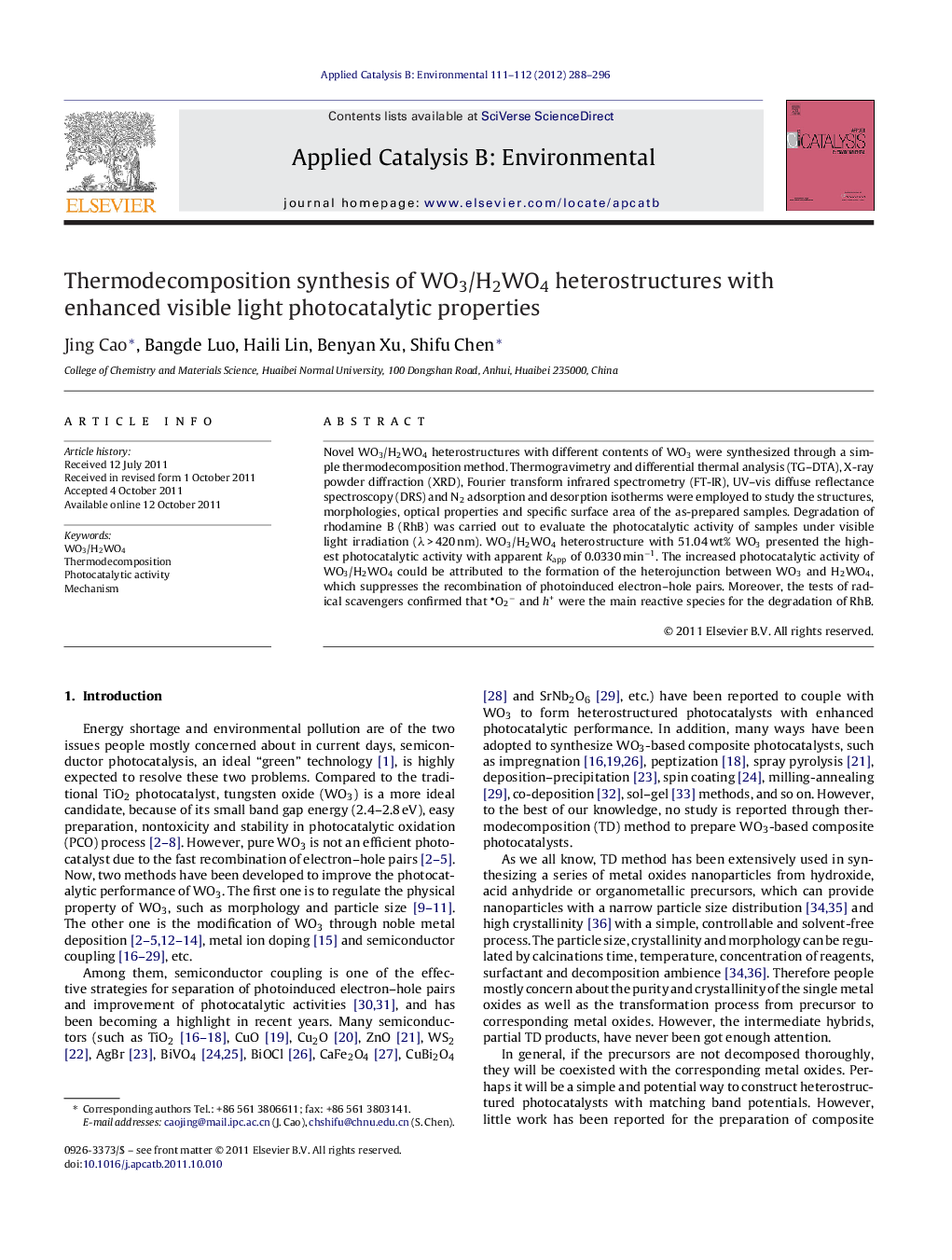| کد مقاله | کد نشریه | سال انتشار | مقاله انگلیسی | نسخه تمام متن |
|---|---|---|---|---|
| 46474 | 46440 | 2012 | 9 صفحه PDF | دانلود رایگان |

Novel WO3/H2WO4 heterostructures with different contents of WO3 were synthesized through a simple thermodecomposition method. Thermogravimetry and differential thermal analysis (TG–DTA), X-ray powder diffraction (XRD), Fourier transform infrared spectrometry (FT-IR), UV–vis diffuse reflectance spectroscopy (DRS) and N2 adsorption and desorption isotherms were employed to study the structures, morphologies, optical properties and specific surface area of the as-prepared samples. Degradation of rhodamine B (RhB) was carried out to evaluate the photocatalytic activity of samples under visible light irradiation (λ > 420 nm). WO3/H2WO4 heterostructure with 51.04 wt% WO3 presented the highest photocatalytic activity with apparent kapp of 0.0330 min−1. The increased photocatalytic activity of WO3/H2WO4 could be attributed to the formation of the heterojunction between WO3 and H2WO4, which suppresses the recombination of photoinduced electron–hole pairs. Moreover, the tests of radical scavengers confirmed that O2− and h+ were the main reactive species for the degradation of RhB.
Novel WO3/H2WO4 heterostructures were synthesized through a simple thermodecomposition method. The WO3/H2WO4 heterostructures exhibited enhanced photocatalytic activity compared to single WO3 and H2WO4 toward degradation of rhodamine B (RhB) under visible light irradiation (λ > 420 nm). The resulting O2− and active h+ played the major roles for the degradation of RhB while OH was verified to be insignificant. The formation of heterojunction between WO3 and H2WO4 is responsible for the enhanced photoactivities of WO3/H2WO4, which can facilitate separation of photoinduced carriers.Figure optionsDownload as PowerPoint slideHighlights
► WO3/H2WO4 heterostructure is a novel composite photocatalyst.
► WO3/H2WO4 was synthesized via partial thermodecomposition method.
► WO3/H2WO4 displays excellent visible light photocatalytic activity (λ > 420 nm).
► The resulting O2− and active h+ played the major roles for RhB degradation.
► Partial thermodecomposition offers a new way to design composite photocatalysts.
Journal: Applied Catalysis B: Environmental - Volumes 111–112, 12 January 2012, Pages 288–296